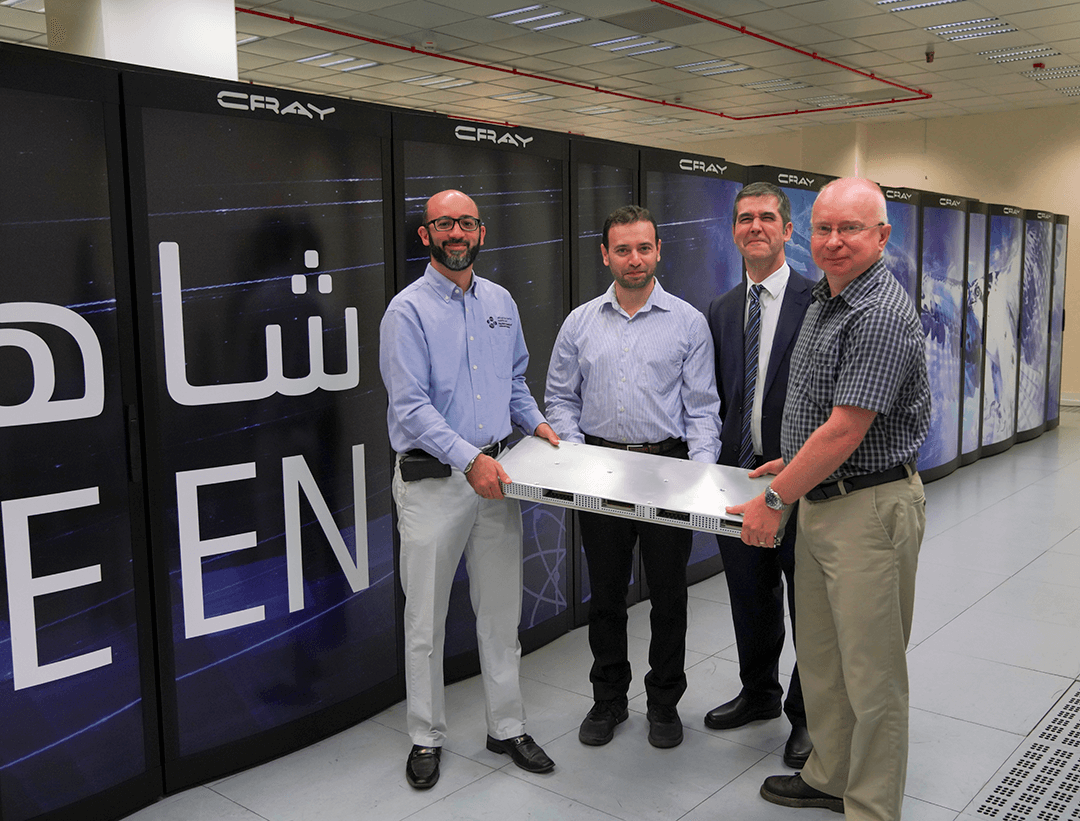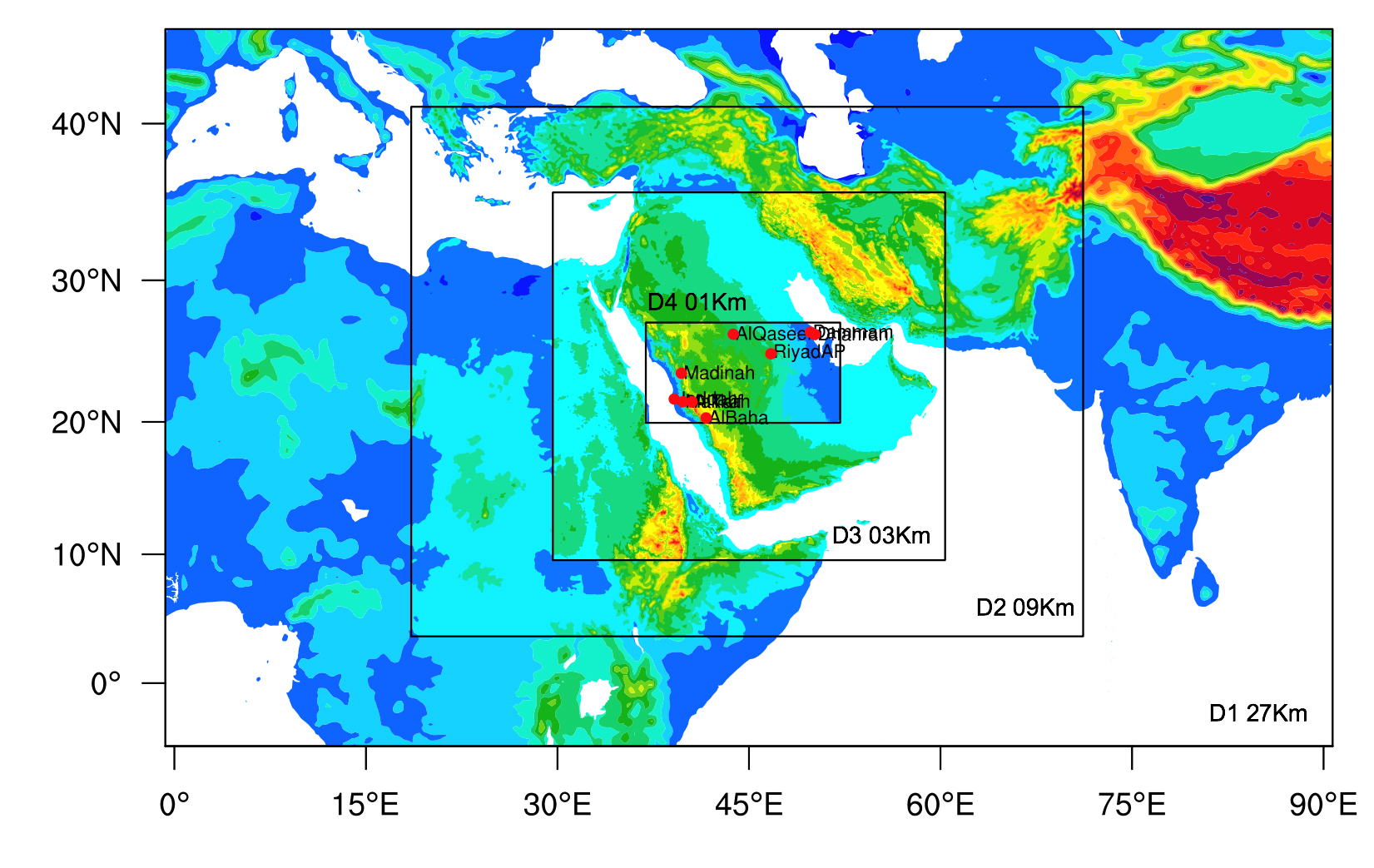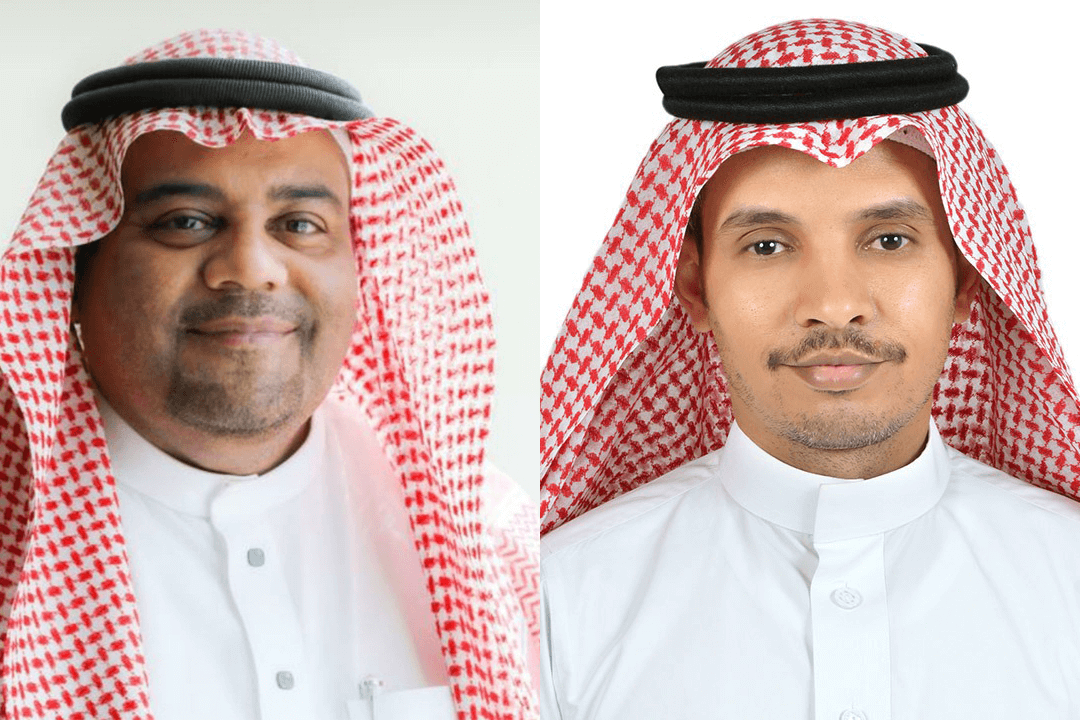An ideal climate for supercomputing excellence

KAUST Supercomputing Core Lab (KSL) team works on Shaheen II, the KAUST supercomputer where National Center of Meteorology (NCM) and KSL scientists collaborate and train weather forecasting models.
Continuous and up-to-date weather tracking is critical for safe air travel, protecting crops from drought or rain, and air-quality advisories for public health. The environmental models that help track and predict weather conditions require a huge amount of computational power that can only be provided by high-performance computing (HPC) facilities.
In the Kingdom of Saudi Arabia, the mission to provide operational weather forecasts for public safety, aviation and national security is carried out by the National Center of Meteorology (NCM), previously part of the General Authority of Meteorology and Environmental Protection (GAMEP).
The need to improve the Kingdom's capability and capacity in modeling weather forecasts has fueled an ongoing collaboration between what is now NCM and the KAUST Supercomputing Core Lab (KSL) since 2016. KSL scientists deliver consultation on upgrading NCM's HPC facility; data storage and backup at KSL; skill building and computing time for NCM researchers on the KAUST supercomputer Shaheen II; and mentorship in HPC maintenance and management for the next generation of NCM engineers.
More computing power, better forecasts
One of the major outcomes from this collaboration is NCM's improved capability to deliver faster results, higher accuracy and greater resolution in weather forecasts as a result of a ten-fold increase in the HPC facility's computing capacity. This was a major turning point in the development of the NCM's services.
Procuring computers capable of performing detailed weather modeling is not an easy task. These computers are custom-built, and the procurement process can take years. KSL scientists provide consulting services in all stages of planning, implementation, evaluation and testing. As a result, the computational capabilities of NCM increased from 10 to 380 TFLOPS (teraflop)—one teraflop represents one trillion floating point operations, or calculations, per second. Work is ongoing with KAUST in the second phase to develop the capabilities to 1.8 PFLOPS (petaflop)—one petaflop expresses a quadrillion FLOPS per second.

NCM uses a specialized version of the open-source Weather Research and Forecasting (WRF) weather prediction model, developed by the U.S. National Center of Atmospheric Research (NCAR). Previously, NCM could only run the WRF model for the Middle East and neighboring regions four times per day. Now, with the increased computing power of an HPC, geographical coverage is extended, and the forecast is updated hourly with new data. File photo.
Increased computing power will allow the NCM to run weather prediction models that update on an hourly basis with new data, and cover an extended area to include the Middle East, much of Africa, and a large part of Asia. For comparison, previous computing power only updated modeling four times a day of the Middle East and neighboring areas of Africa and Asia. The visibility of weather patterns also improved from 7 kilometers to 1.6 kilometers resolution, providing significantly more detail.
Dr. Jysoo Lee, facilities director of the KAUST Supercomputing Core Lab, said, "It is our mission to develop cutting-edge facilities and technical expertise in HPC. We are pleased to make a difference by supporting [NCM] to improve their capability using our infrastructure initially, and then helping them become independent to a great degree with their own system."
Big developments are enabling the NCM to improve numerical forecasting systems, including weather, dust and ocean models, and nowcasting systems, which play a major role in tracking the path and development of thunderstorms and strong winds.
"We at NCM appreciate the great efforts made by KAUST and the KSL team, and we believe that this cooperation paves the way for continuous cooperation, which contributes to the service of the nation and its citizens," said Mohammed Alomary, director of Numerical Weather Prediction.
Weather research at the KSL
In addition to assisting with facility upgrades, the KSL invites NCM engineers to perform environmental research on the supercomputer at KAUST, Shaheen II. Due to the size and speed of Shaheen II, NCM researchers can explore different atmospheric conditions in their models, such as air pollution, allowing them to advance and improve their weather forecast modeling without disrupting NCM's day-to-day operations for live weather monitoring and forecasting.
Using the power of Shaheen II, the NCM has worked with the U.S. National Center for Atmospheric Research (NCAR) to develop and implement a specialized operational weather-forecast system that provides extended, ten-day forecasting for dust and sandstorms in real time. The previous system could only provide three-day forecasts.
"The cooperation between NCM and KAUST, represented by KSL, is a qualitative leap in the meteorological work at the NCM, as it enabled the center to work with a group of the best scientists in the field of computing and use the high resources of Shaheen II HPC," Alomary said.
Training the next generation
Beyond weather forecasting, one of the major goals of this project is to develop HPC capability and expertise within the Kingdom. Hence, the training of NCM engineers is a priority, especially in the next phase of the collaboration.
The KSL offers customized training to NCM engineers for running weather models, as well as optimized and accelerated access to the model files on Shaheen II. Cultivating local expertise helps guarantee the continued excellence of HPC operations and weather forecasting at the NCM and throughout the Kingdom.

Dr. Saber Feki, senior computational scientist team lead at KAUST, with NCM’s recently installed high performance computer, which he helped procure and install. File photo.
"Besides supporting the NCM HPC project, we are most proud of training the young Saudi engineers within NCM who are eager to learn and curious about current and future technologies," said Dr. Saber Feki, senior computational scientist team lead at KAUST. "Sitting with them, answering their questions and explaining the different concepts of HPC were the most fulfilling moments in my journey with NCM."
The future of forecasting
The KSL also hosts backup data storage at KAUST for NCM, including a replicate of their weather model. To facilitate transferring this backup and research data, the KAUST IT team worked with the Saudi Telecom Company (STC) to set up a high-speed network linked directly to the NCM. The data backup at KAUST and the direct network link ensure that, even in the case of computer failure, the NCM will continue to provide the public and government ministries with timely weather alerts and forecasting.
"The collaboration with NCM indicates a strong demand for greater computing power and world-class technical expertise," noted Dr. Daniel Acevedo-Feliz, interim executive director of KAUST Core Labs and Research Infrastructure. "KAUST is proud to play a role in developing local talent and enabling the development of HPC facilities that meet the Kingdom's current and future needs."

Dr. Ayman Ghulam, CEO of NCM, and Mohammed Alomary, Director of Numerical Weather Prediction at NCM. Photos courtesy of the National Center for Meteorology.
Dr. Ayman Ghulam, CEO of the NCM, praised the success of the KSL cooperation:
"This success opens the door for continued collaboration with KAUST in several areas, as well as joint participation in the research and development of meteorological work in the Kingdom of Saudi Arabia."

